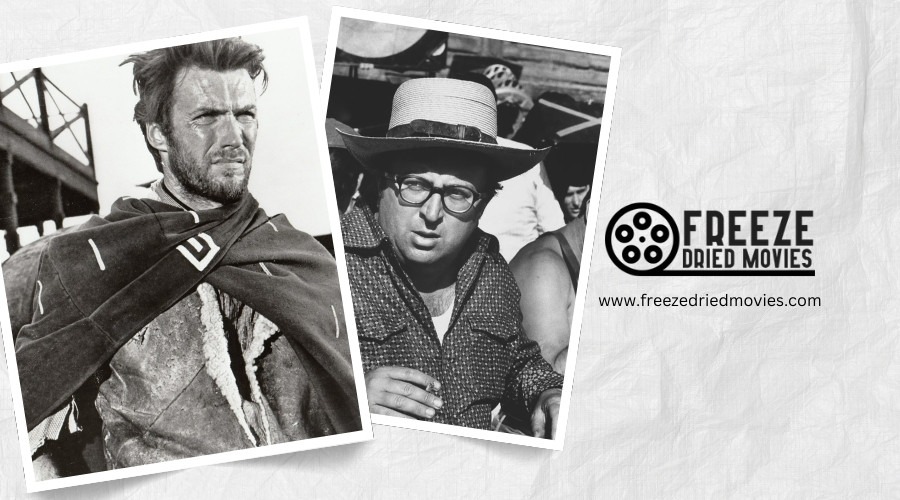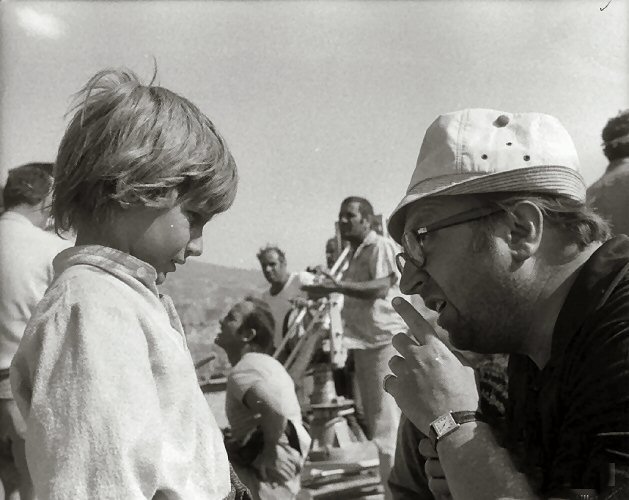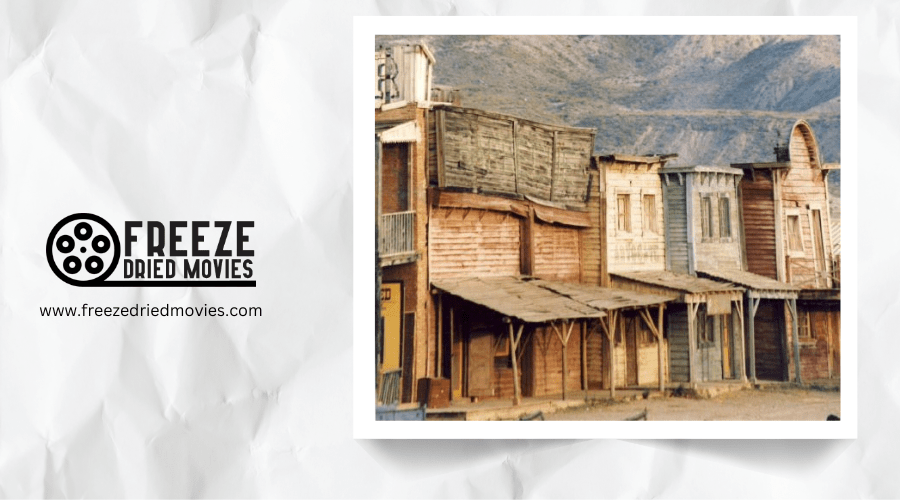From Tarantino to Indie Hits: The Lasting Influence of Spaghetti Westerns

You've seen the hallmarks of spaghetti westerns in today's films, perhaps without realizing their origin. From Tarantino's blood-soaked homages to indie directors' subversive narratives, these Italian-made westerns revolutionized cinema beyond their dusty frontier settings. They introduced morally complex characters, innovative camera techniques, and unforgettable musical scores that continue to shape filmmaking decades later.
What began as low-budget productions on Spanish landscapes has transformed into one of cinema's most influential movements. The question is: how deep does this influence go?

From Tarantino to Indie Hits: The Lasting Influence of Spaghetti Westerns
While Hollywood continues to reinvent itself with each passing decade, the unmistakable fingerprints of Sergio Leone's spaghetti westerns remain deeply embedded in modern cinema. You'll find these influences most prominently in Quentin Tarantino's work, from his upcoming "Once Upon a Time in the West" to "Django Unchained," which draws directly from the controversial "slavesploitation" subgenre.
Tarantino's stylistic approach mirrors Leone's innovative techniques—cutting scenes to music, embracing surreality, and incorporating gallows humor. These elements appear throughout his filmography, including "Kill Bill."
Beyond Tarantino, Leone's influence extends to independent films worldwide, with directors like Robert Rodriguez and Takashi Miike adapting these distinct Italian perspectives on violence and genre conventions. The spaghetti western aesthetic continues to shape contemporary filmmaking, demonstrating how profoundly these 1960s-70s productions revolutionized visual storytelling. Clint Eastwood's iconic Man With No Name persona exemplifies this revolution through calculated silence and visual storytelling that influenced countless characters across cinema.
The Birth of a Genre: Sergio Leone's Revolutionary Vision
Three key innovations transformed the western genre forever when Sergio Leone stepped behind the camera in the mid-1960s. The Italian director's spaghetti westerns combined surreal violence with dark humor at an epic scale, creating cinematic worlds that defied Hollywood conventions.
His masterpiece "The Good, the Bad and the Ugly" showcases Leone's revolutionary visual style, featuring extreme close-ups and deliberately paced scenes that build unbearable tension.
- Pioneered the use of music as a storytelling device, influencing generations of filmmakers
- Blended realism with stylized violence he described as "opera"
- Used long, drawn-out scenes to challenge audience expectations
- Created a visual language of extreme close-ups that became instantly recognizable
- Established a blueprint for genre subversion later embraced by directors like Quentin Tarantino
Leone's groundbreaking approach to storytelling emerged during a time when the Hays Code was gradually losing influence over Hollywood's creative freedom.
Visual Language: Innovative Cinematography That Changed Filmmaking
Beyond mere storytelling, spaghetti westerns revolutionized cinematic language through their distinctive visual approach. You'll notice these films broke from traditional western cinematography with dynamic, wide-framed compositions that created unprecedented visual tension.
The genre's innovative techniques—like intercutting between extreme close-ups and wide panoramic shots—became its signature style. Directors employed long lenses and early Steadicam techniques to immerse you in their gritty, realistic worlds.
The distinctive color palettes and intentional aging effects gave these films their unmistakable visual identity.
What's particularly striking is how spaghetti westerns subverted conventional perspectives through overhead shots and dramatic low-angle compositions. This visual language didn't just define a genre—it fundamentally changed filmmaking itself, influencing generations of directors who adopted these techniques to create their own visual storytelling approaches. Much like Matthew Libatique's approach, these directors understood that meticulous preparation enables spontaneous creativity while maintaining a cohesive visual identity.
Morally Ambiguous Heroes: Redefining Character Development
Unlike their Hollywood counterparts, spaghetti western protagonists defied conventional morality by existing in ethical gray zones that challenged viewers' expectations. These antiheroes displayed ruthless violence while maintaining certain redeeming qualities, creating a nuanced approach to character development that transcends simplistic good-versus-evil narratives.
Films like "The Good, the Bad and the Ugly" pioneered moral ambiguity in westerns. Protagonists driven by self-interest rather than traditional heroic altruism. Genre subversion that deliberately contradicted classical Hollywood's clear moral lines. Character complexity that explored the darker aspects of human nature. Enduring influence visible in Quentin Tarantino's morally complex characters.
You'll find this spaghetti western legacy in today's crime dramas and neo-westerns, where protagonists continue to navigate complicated moral landscapes. This revolutionary approach to characterization forever changed how filmmakers depict heroes across genres.
Music as Storyteller: Ennio Morricone's Sonic Landscapes
The haunting wail of a harmonica or the distinctive whistle paired with electric guitar can instantly transport you to the dusty landscapes of the American West—not through the lens of Hollywood, but through Ennio Morricone's revolutionary musical vision.
His minimalist approach transformed film scores into active narrative devices. You'll recognize the iconic theme from "The Good, the Bad and the Ugly" anywhere—its distinctive notes have become shorthand for tension and confrontation.
What made Morricone's work revolutionary was his bold use of untraditional instruments: ocarinas, whistling, and human voices created unforgettable sonic landscapes that shaped the emotional tone of each scene. Through his collaboration with Sergio Leone, these compositions elevated spaghetti westerns beyond genre films, crafting immersive experiences where music wasn't background—it was storyteller.
Tarantino's Love Affair With Leone: Homage and Adaptation
Leone's cutting scenes to music in "The Good, the Bad and the Ugly" directly inspired Tarantino's signature audio-visual storytelling
- Tarantino's nonlinear narrative structures echo Leone's revolutionary approach to the western genre
- Both directors share a fascination with heightened realism and stylized violence
- Tarantino's rich character development mirrors Leone's iconic character-driven stories
- The blending of genres that defines Tarantino's work follows Leone's boundary-breaking filmmaking philosophy
Beyond Hollywood: Global Directors Shaped by Spaghetti Westerns
Five decades after their heyday, spaghetti westerns continue to exert profound influence on filmmakers across continents, transcending their European origins to shape global cinema. You'll find their DNA in the work of directors like Takashi Miike and John Woo, who adapted the genre's stylized violence and moral ambiguity for Japanese and Hong Kong audiences.
The spaghetti western's impact extends far beyond Quentin Tarantino and Robert Rodriguez's Hollywood productions. Independent film scenes worldwide have embraced the genre's anti-hero narratives and distinctive visual style. What began as an outsider's perspective on American mythology has evolved into a universal film language that challenges conventional storytelling.
This global influence demonstrates how effectively the genre crossed cultural boundaries, offering filmmakers in international cinema fresh approaches to explore power, justice, and morality through unconventional protagonists.



